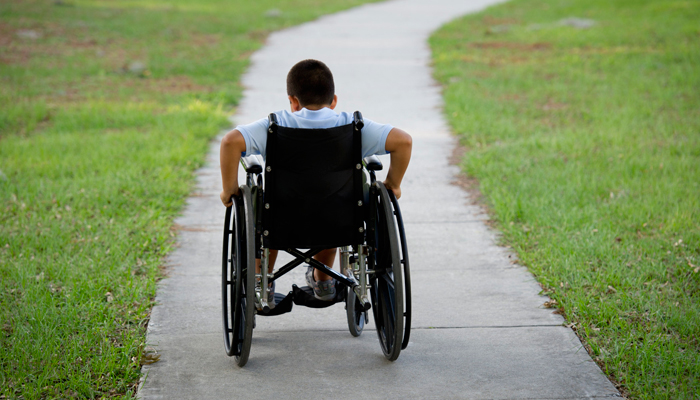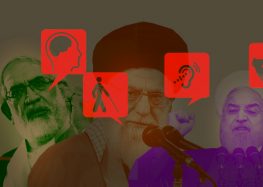Encouraging the Adoption of Disabled Children is a Good Idea That Needs Better Planning

A recent pledge by an Iranian official to provide financial assistance to families that adopt children with disabilities is a good idea that requires thoroughly examining the underlying issues and improving existing services, a children’s rights activist told the Center for Human Rights in Iran (CHRI).
The activist, who specializes in defending the rights of children with disabilities, explained that it’s difficult to envision how the government could honor such a pledge when it barely provides assistance to families currently caring for disabled children.
“Encouraging families to adopt disabled children is a very positive and necessary move, as long as it comes with administrative backing,” said the activist, who requested anonymity for security reasons.
“The reality is that right now, disabled children who live with their parents don’t get much financial assistance or medical insurance,” said the activist. “So without these services, how is the State Welfare Organization going to encourage families to embrace these children?”
On October 15, 2017, the State Welfare Organization’s Director for Children’s Affairs Mohammad Nafarieh announced that families that adopt disabled children would be provided with state medical insurance and financial aid for the child.
“There are 9,000 children under the care of the state welfare system and we have to reduce that number,” added Nafarieh.
The activist also noted that the government’s proposed monthly assistance — 50,000 tomans up to 100,000 tomans ($14.50-$29 USD) depending on the category of the child’s disability—is grossly insufficient.
“How is that amount going to help a disabled child live in a place like Tehran?” said the activist. “The welfare organization does not pay much attention to the psychological and cultural needs of the disabled or their families. They receive no support. These families are struggling to raise their children on their own.”
Continued the activist: “Some families are so desperately poor that they are incapable of taking care of their disabled children and they try to place them in the care of charity organizations. So how can welfare officials expect families to adopt these children with 50,000 or 100,000 tomans per month?”
In December 2016, Ali-Hemmat Mahmoudnejad, the head of the Iranian Society for the Protection of People with Disabilities, said many disabled people require specialist treatment at private hospitals that are not covered by state-issued health insurance plans.
“Physical therapy is very expensive and yet the assistance given to adult people with disabilities is only 53,000 tomans ($15.50 USD),” he said. “According to the Fourth National Development Plan Law, the amount has to be 30 percent of the minimum monthly wage, or 270,000 tomans ($79 USD).”
The government must also ensure that families that agree to adopt disabled children are qualified and receive support, according to the children’s rights activist who spoke to CHRI.
“A family that agrees to accept disabled children should receive training, make the necessary adjustments inside the home, and get financial assistance, as well as insurance,” said the activist. “Also each family’s treatment of the adopted child should be carefully monitored to avoid any mistreatment, violence or sexual abuse.”
“Before we give away a disabled child to a family, we must first ensure that the child will have access to basic medical care and education,” noted the activist. “The new family should know how to treat the child.”
According to Article 19 of the United Nations Convention on the Rights of Persons with Disabilities, approved by Iran’s Parliament in December 2009, states must ensure “Persons with disabilities have access to a range of in-home, residential and other community support services, including the personal assistance necessary to support living and inclusion in the community, and to prevent isolation or segregation from the community.”
In November 2015, the head of the State Welfare Organization, Anoushirvan Mohseni Bandpei, stated that more than 30,000 children are born with disabilities in Iran every year. In July 2016, he claimed the annual number had dropped to 25,000.
Approximately 1.3 million Iranians living with disabilities, about two percent of the population, receive services from 2,200 rehabilitation centers based throughout the country, said Hossein Nahvinejad, the State Welfare Organization’s director in charge of rehabilitation, in May 2017.






